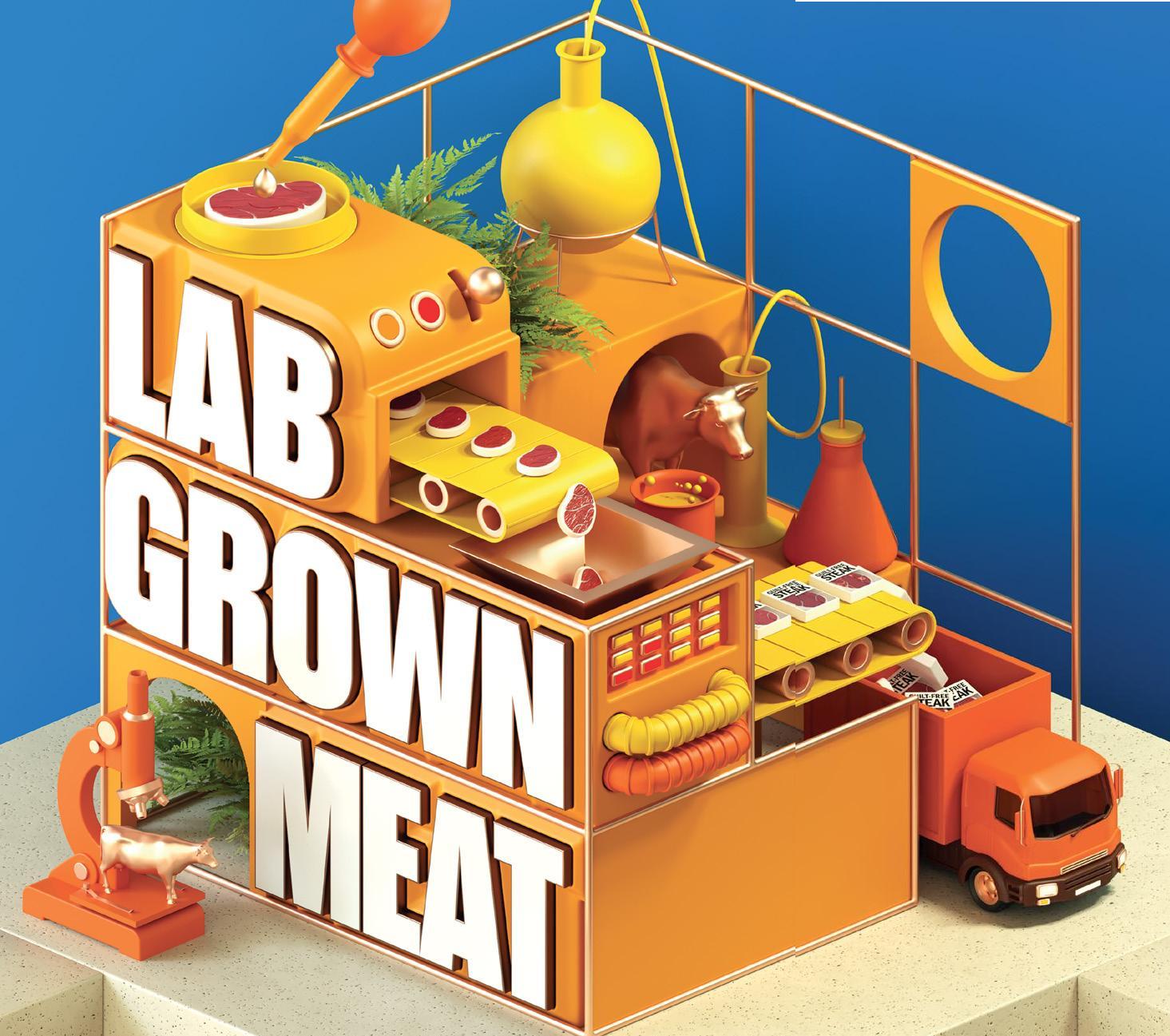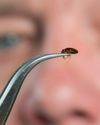
It wasn’t long ago that the idea of the meat on our plates coming from vast stainless steel bioreactors, rather than farmed animals, seemed like science fiction. The notion has gone through numerous rebrands since its early positing as ‘vat meat’, which triggered unappealing visions of high-tech Spam. ‘Lab meat’ came next, as scientists perfected the recipe in small beakers in laboratories. Then came the more appetising-sounding ‘cultured meat’, as investment from highprofile individuals rocketed and producers positioned these products as having been brewed, just like beer. Now, ‘cultured meat’ has evolved to ‘cultivated meat’, which is the preferred term used by CEOs in the industry.
Whatever you choose to call it, with the future of global food security in question, and farmed meat a key culprit in climate breakdown, slaughter-free meat is starting to look increasingly like the future of food.
HOW IS THE MEAT MADE?
Rather than being part of a living, breathing, eating and drinking animal, cultivated meat is grown in anything from a test tube to a stainless steel bioreactor. The process is borrowed from research into regenerative medicine, and in fact Prof Mark Post of Maastricht University, who cultured the world’s first burger in 2013, was previously working on repairing human heart tissue. Cells are acquired from an animal by harmless biopsy, then placed in a warm, sterile vessel with a solution called a growth medium, containing nutrients including salts, proteins and carbohydrates. Every 24 hours or so, the cells will have doubled.
This story is from the September/October 2022 edition of Very Interesting.
Start your 7-day Magzter GOLD free trial to access thousands of curated premium stories, and 9,000+ magazines and newspapers.
Already a subscriber ? Sign In
This story is from the September/October 2022 edition of Very Interesting.
Start your 7-day Magzter GOLD free trial to access thousands of curated premium stories, and 9,000+ magazines and newspapers.
Already a subscriber? Sign In

TAKE IT SLOW
Slow running is a fitness trend with some hard and fast science behind it

Physics, AI and music share a common thread. You just have to know where to look
Studying science can lead you in many directions and open doors to unexpected possibilities along the way

BED BUGS VS THE WORLD
When bloodthirsty bed bugs made headlines for infesting Paris Fashion Week in 2023, it shone a spotlight on a problem that's been making experts itch for decades: the arms race going on between bed bugs and humans

Kids are the key to understanding obesity. But we need more of their genes...
We can unravel the role that bodyweight plays in disease, but we need a bigger, more diverse, sample of genetic material to do so

COVID inquiry: What did we learn and what can we do better in future pandemics?
Masks, social distancing, lockdowns... how effective was the UK's response to the COVID-19 pandemic?

One hormone could be the key that unlocks a cure for morning sickness
The nausea and vomiting that, in extreme cases, can endanger mothers and babies might soon be just a memory

THE WORLD'S WEIRDEST CREATURES
Under the sea and upon the land, some animals look - to us - pretty strange...

WHEN MIND AND MACHINE COLLIDE
First, Elon Musk wanted to make electric cars ubiquitous, then he wanted to make space exploration a private enterprise. Now, with Neuralink, his newest venture, Musk hopes to merge humans and artificial intelligence. Turns out, it might not be such a crazy idea...

COME OUT OF YOUR SHELL
Social anxiety is more than just being shy. It's a phobia born out of our evolutionary past. But that raises a puzzling question: why do so many of us fear human interaction when we're supposed to be the most sociable species on the planet?

SPACE ODDITIES
Take a tour of the weirdest spots in the universe, where the 'normal' rules don't apply. Places that squeeze time, blow bubbles and even rain glass... sideways